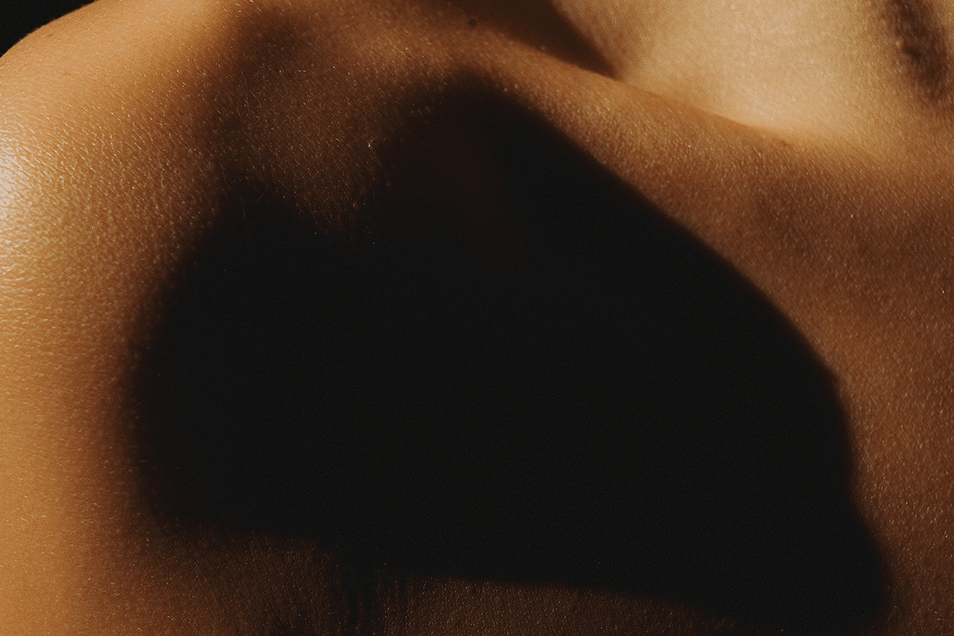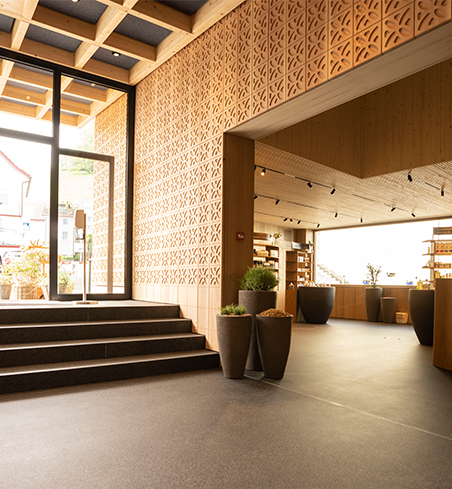
The sunny sides
Sunlight makes us feel happy and boosts our energy levels. This is how we perceive it, and this is what has also been scientifically proven to a certain degree. With the help of UV-B ultraviolet radiation, our body can produce vitamin D on its own. A deficiency of this vitamin can cause fatigue and feelings of depression and even encourage various diseases.
However, this does not mean in any way that we should expose ourselves to unlimited sunshine, because as healthy as solar radiation can be, it can also be dangerous. This fact is also scientifically proven.
The dark sides
Solar radiation is made up of around 50 % visible light, approximately 44 % of infrared (heat) radiation and about 6 % of UV radiation. Ultraviolet radiation, which has particularly high energy levels, is not visible to the human eye, but the effects it leaves on our skin are.
Sunburn not only looks unpleasant, it also feels that way. However, this is relatively unimportant when compared to the long-term consequences of sunburn.
UV-B rays are short-waved and only penetrate to the epidermis. Here they are partly responsible for the thickening of the stratum corneum (light callosity), which protects the skin from the sun. They also stimulate vitamin D synthesis and ensure that pigment formed again and the skin therefore looks tanned. However, too much UV-B radiation can have dangerous consequences. For this reason it is mainly responsible for sunburns and can cause cancer in the cells of the epidermis. Until now, damage caused by UV light to the deoxyribonucleic acid (DNA), where genetic information is stored, was considered to be the main cause of melanoma.

UV-A rays have longer wavelengths, penetrate into the dermis, can damage the collagen structure and produce free radicals that make the skin age prematurely and also cause malignant melanoma.
For a long time the focus was primarily on UV-B radiation as harmful ultraviolet radiation, and UV-A radiation was only later classified as similarly dangerous. In the meantime, there is another form of radiation that is increasingly being highlighted – infrared radiation – in connection with premature skin ageing.
How we tan and what it reveals about our skin type
In our uppermost skin layer there are cells called melanocytes, which can produce the brown pigment melanin when exposed to UV radiation. Melanin wraps itself around the DNA in the cell like a protective shield and as a result can prevent radiation-induced damage to our genetic material. However, depending on the skin type, we are only talking about a self-protection time of a few minutes, which corresponds to a UV protection factor of about 3-4. The average recommended sun protection factor for sunscreen, on the other hand, is on average 20-30.

When referring to the self-protection of different skin types, we are talking about the pigmentation type, which is determined by how much melanin our melanocytes, of which we all have roughly the same number, can produce and above all which type of melanin they produce more of. There are lighter and darker types which ultimately means that some people tan more easily and turn a darker colour than others. However, dark skin types also require additional protection.
The right protection for everyone
No matter which way we look at it, in the end one thing is clear – we should all pay attention to additional sun protection, no matter which skin type we have.
This not only helps us prevent annoying sunburn, it also protects our skin against premature ageing and provides moisture.
The calculation model based on different skin types serves as an guide to find the right sun protection factor and the period of time we can expose our skin to the sun. At the same time, however, it is also evident that even the darkest skin type should not completely do without additional sun protection.

A lot helps a lot
This general rule is definitely a golden rule when it comes to applying sunscreen. While failure to apply sufficient amounts can have serious consequences, too much of a good thing can do no harm. On the contrary. People tend to use sunscreen sparingly, which means that the sun protection factor on the packaging is often not reached on the skin, and is much lower. The rule of thumb is at least 30 ml of sunscreen (a full tablespoon) should be used if the whole body is to be sufficiently covered with cream and the stated sun protection factor is to be achieved. Don’t worry, a sun protection factor is never exceeded if the sunscreen is applied very generously, and for this reason no-one should believe that applying twice the amount will also double the sun protection factor. Nevertheless, regular reapplication – even if you were not in the water – is essential, as abrasion (towel, sand…) reduces the effect. Please note – reapplication can only maintain the level of protection, but does not extend the calculated sun exposure time
JUST sun protection
For the face:
Edelweiss ¦ Physalis
SUN CARE Sun Cream with protection factor 30
- For exposed areas of the body such as the face, ears, neck, décolleté, hands, etc.
- Protection against UVA / UVB, infrared and free radicals
- Prevents sunburn and skin ageing with premature wrinkles for an even complexion and well-groomed skin appearance
- Smooth texture, is easily absorbed, does not look shiny, is suitable as a basis for make-up and is ideal to use over or instead of day care products
- Optimum resistance to perspiration and water
For the body:
Edelweiss ¦ Physalis
SUN CARE Sun Lotion with protection factor 30
- Protection against UVA / UVB, infrared and free radicals
- Prevents sunburn and skin ageing for an even complexion and well-groomed skin appearance
- Nourishes like a body lotion, moisturises, is easy to distribute, is quickly absorbed, non-greasy and does not leave a white film
- Optimum resistance to perspiration and water
Edelweiss ¦ Physalis
SUN CARE Sun Lotion with protection factor 50
For particularly sensitive skin or extreme conditions such as in the mountains or tropical regions
- Protection against UVA / UVB, infrared and free radicals
- Prevents sunburn and skin ageing for an even complexion and well-groomed skin appearance
- Nourishes like a body lotion, moisturises, is easy to distribute, is quickly absorbed, non-greasy and does not leave a white film
- Optimum resistance to perspiration and water

The innovative JUST UV filter formula of all JUST SUN CARE products is designed to have as little impact as possible on the sensitive micro-organisms of our waters and one of the oldest ecosystems on earth, the coral reefs.
For 90 years JUST has been developing, producing and distributing high-quality plant and herbal care products for health, beauty and well-being on a personal one-to-one basis.



